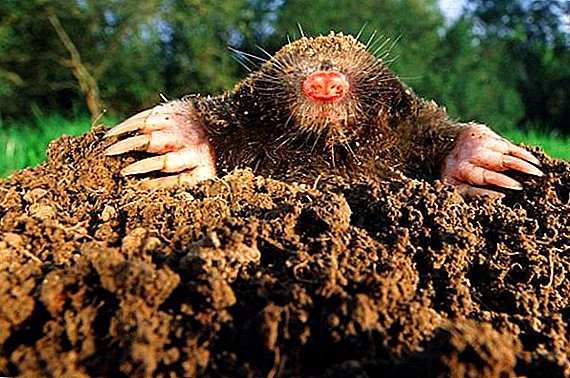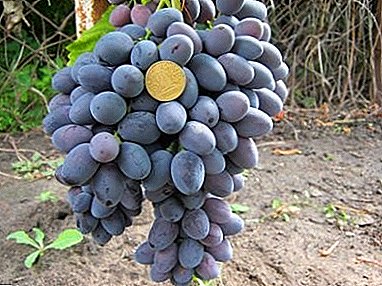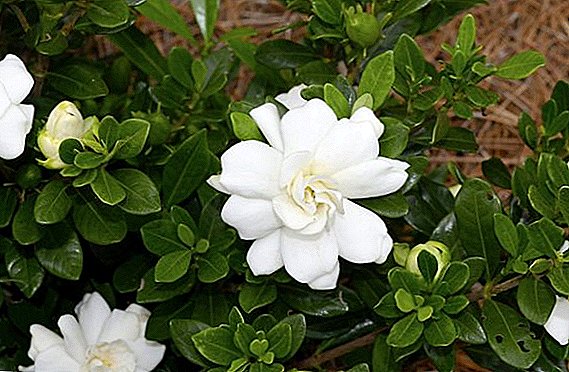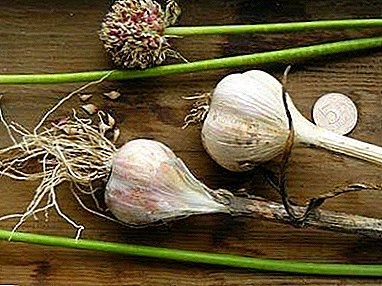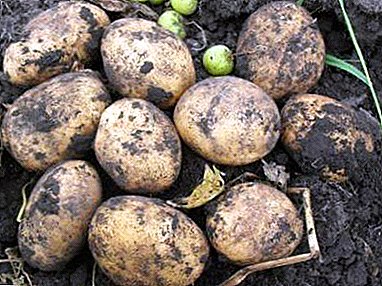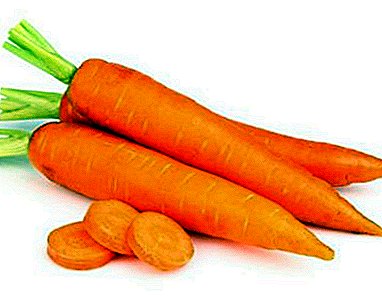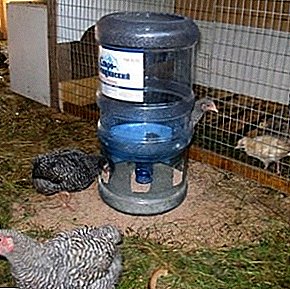
Watering poultry is one of the most important factors in the quality content of broilers, young stock and hens of egg breeds.
Fresh water determines the health status of poultry, its rate of growth, as well as the amount of feed consumed.
Unfortunately, many novice farmers forget about the role of water in the body of the chicken, so their livestock becomes less productive.
The amount of feed absorbed is directly related to the water consumed. Juveniles and broilers need the following ratio of feed and water - 1.5: 1, and laying hens - 2.4: 1.
However, the need for water depends not only on the age and type of productivity of the breed, but also on the form of feed used in the poultry farm.
The importance of proper watering chickens
During feeding of poultry with the help of dry granulated feed, the need for liquid increases almost up to 30% in comparison with feeding with mash ham cooked in water.
The fact is that the wet food also contains water, so to avoid oversaturation with liquid, the amount of fresh water should be significantly reduced.
Also, birds may need more water due to an increase in salt feed. Of course, too salty food in any case can not be given to chickens, but a small amount of this substance has a positive effect on the entire digestive system.
Water consumption can increase due to the feeding of poultry feeds containing meals, molasses, a large amount of fiber and protein.
If the birds do not get enough fresh water, then soon they may suffer from dehydration and exhaustion.
Air temperature and its effect on the amount of fluid consumed
 Chickens, like any other living creatures, begin to feel the lack of water during a significant increase in air temperature.
Chickens, like any other living creatures, begin to feel the lack of water during a significant increase in air temperature.
At this time, the bird's body begins to actively evaporate excess water, trying to normalize body temperature.
Breeders experts have found that at a temperature of + 18 ° C, the laying hens drink about 200 ml per day, and broilers - 170 ml per unit weight. At a temperature of + 30 ° C, the amount of liquid consumed sharply increases several times.
As a rule, all chickens are kept in their temperature comfort conditions - at + 21 ° C.
In this microclimate, they can eat up to 120 g of feed and drink 200 g of water per head. When the temperature rises by 9 ° C, the birds begin to consume a smaller amount of feed - about 80 g per chicken per day.
Thus, the chickens eat almost 2 times less food, but at the same time they drink 3 times more drinking water. Because of this, the ratio between the water consumed and the food eaten becomes equal to 7.2 liters per 1 kg of grains.
Can I use cold water?
 Few farmers know that it is not only the quality and quantity of water that is important for chickens, but also its temperature.
Few farmers know that it is not only the quality and quantity of water that is important for chickens, but also its temperature.
The optimum temperature can vary depending on the age of the bird. Daily chicks are well suited for drinking water at room temperature.
Immediately after hatching, the chickens are poured water into the troughs, but the young themselves do not run into the cage so that the water can warm up.
Broiler chickens or the young of the egg breeds are usually watered with water warmed to 33 ° C. They are usually watered with such water for 72 hours.
This allows chicks to warm themselves in the first days of their lives. Then the breeders gradually lower the temperature of the drinking water. By the age of 21 days, chicks should already receive water having a temperature of 18 ° C.
Water temperature for broilers in the second growing period and for adult chickens should not exceed 13 ° С. During this period of chickens life, it is not recommended to drink highly heated water.
The fact is that drinking water with warm water for several weeks can lead to disruption of the stomach and intestines. Peristalsis of the digestive organs is significantly reduced and the number of contractions made by the stomach walls decreases.
 The Pavlovskaya silver breed chickens are much less common than their golden counterparts, whose photos you can see on our website.
The Pavlovskaya silver breed chickens are much less common than their golden counterparts, whose photos you can see on our website.For some reason, the red-capped chickens in Russia are virtually unknown. This page is written about them in detail.
If the heated water still began to flow into the drinkers, it is necessary to do it by artificial cooling. For these purposes, perfect water from a column or well, which comes from the bowels of the earth. It is mixed with heated water, bringing to the optimum temperature.
Consumption restriction
 In some cases, farmers give their livestock a reduced amount of drinking water.
In some cases, farmers give their livestock a reduced amount of drinking water.
This restriction is often necessary for chickens who actively lay eggs. Layers immediately begin to actively consume dry feed, and the humidity in the room is significantly reduced in the room.
However, we must remember that restricting drinking water to 30 percent or more may adversely affect on herd productivity. Layers will start laying fewer eggs, and growing broilers will stop gaining weight.
Often, limiting water consumption is used in large poultry farms to increase the rate of building muscle.
During a shortage of water, meat-breeding chickens begin to feed actively, which soon has a beneficial effect on the live weight of the bird.
Water restriction is always done to the benefit of livestock., but in some cases it can be harmful.
Often, young chickens begin to start a fight at the troughs with a limited amount of water. This can lead to such an unpleasant phenomenon as pecking or cannibalism. For this reason, specialists need to very carefully monitor the state of the population during the reduction of water supply.
Water supply systems
During the maintenance of chickens on private farms, many breeders do not use centralized drinking systems. Usually they use chick-friendly containers, from where they themselves will drink water whenever they want. However, on the territory of large poultry farms, well-established nipple watering systems are always used.
 Nipple watering line consists of:
Nipple watering line consists of:
- Mandatory water pressure regulator having a limit switch for flushing the entire line. It can be located at the very beginning, and in the middle of the line. Their main role is to prevent the airing of the entire line.
- Plastic pipes with dimensions of 20x22x3 mm. Nipples and drop catchers are screwed into it directly.
- Aluminum tubes used to give strength to the entire system.
- Suspension systems consisting of cables, winches and rollers for convenient lifting.
- An anti-iron wire that protects the nipples from the feet of a bird that wants to sit on it, like a perch.
- Water treatment unit.
How to calculate the volume?
 As mentioned above, birds of different ages and different productivity need a certain volume of water. To determine exactly how much liquid chickens should receive, you need to know for sure:
As mentioned above, birds of different ages and different productivity need a certain volume of water. To determine exactly how much liquid chickens should receive, you need to know for sure:
- The number of heads per 1 m of the watering tube or the total number of chickens that are kept in one cage.
- Maximum water consumption per bird per unit of time (1 min).
- The received amount of water consumed in 1 minute should be divided by 80-100. So you can find out the number of nipples that should be in the same cell.
How to choose the type of nipple?
 On chicken farms where a large number of chickens are bred, completely different types of nipples can be used.
On chicken farms where a large number of chickens are bred, completely different types of nipples can be used.
Nipples with a 180-degree nipple turn are ideal for adult birds. In other words, it can supply water only when it moves down and up. Usually its cost is much cheaper than other similar devices.
For day-old chicks and broilers it is necessary to install nipples, having a 360-degree nipple turn. It can supply water not only when moving up and down, but also when turning right and left. Unfortunately, it is much more expensive than 180-degree nipples.
Also during the selection of the nipple type it is necessary to take into account the fact that water with a high salt concentration may cause metal corrosion. That is why it is better to buy more expensive nipples made of stainless steel.
Conclusion
Water is life not only for humans, but also for farm animals and birds. It takes part in all metabolic processes occurring in the body of the chicken, accelerating or slowing its growth and development. Because of this, watering the birds needs special attention.
If at home it is enough to install small containers with clean water, then on an industrial scale it is necessary to arrange a reliable nipple system.




